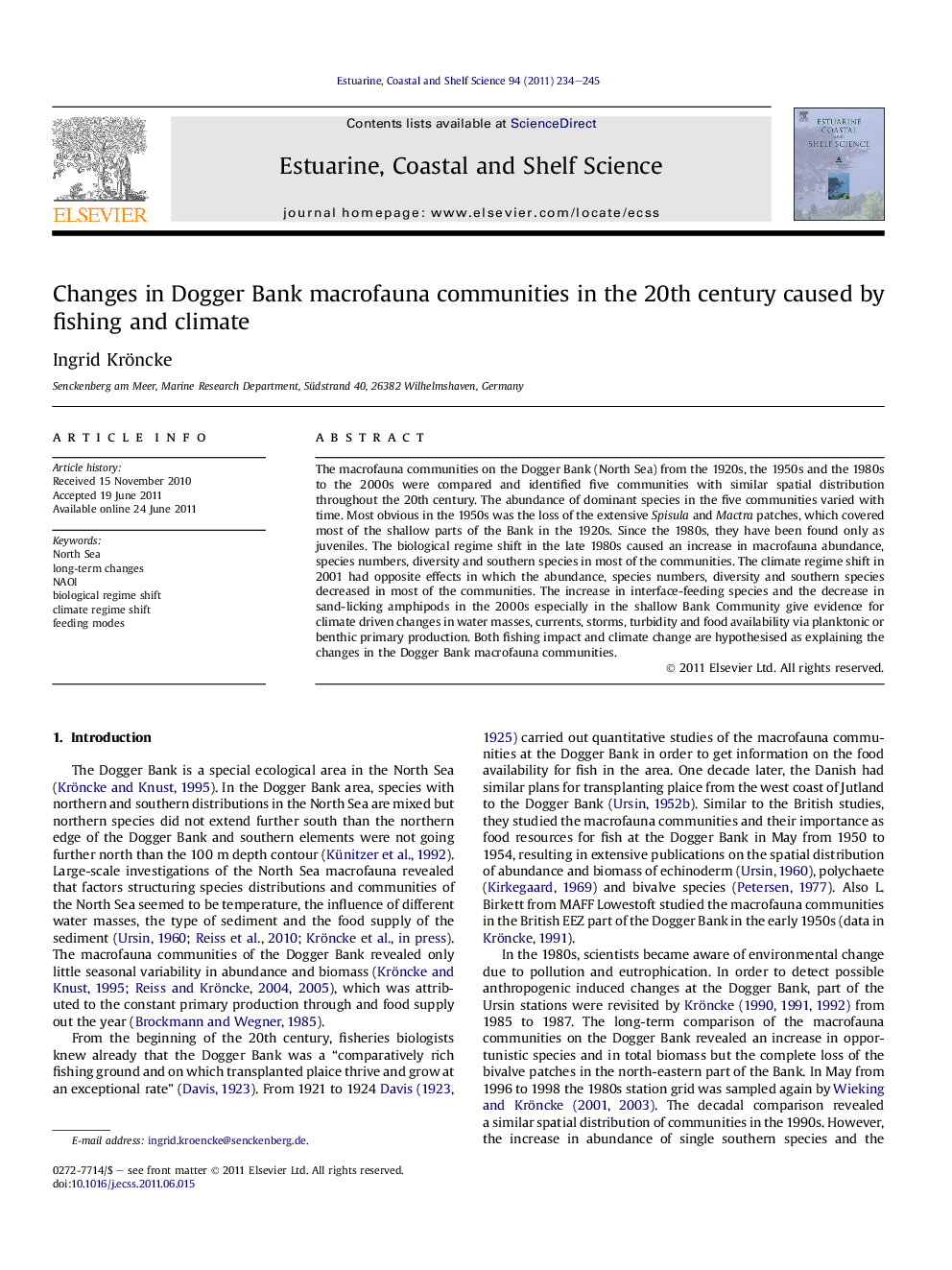| Article ID | Journal | Published Year | Pages | File Type |
|---|---|---|---|---|
| 4540458 | Estuarine, Coastal and Shelf Science | 2011 | 12 Pages |
The macrofauna communities on the Dogger Bank (North Sea) from the 1920s, the 1950s and the 1980s to the 2000s were compared and identified five communities with similar spatial distribution throughout the 20th century. The abundance of dominant species in the five communities varied with time. Most obvious in the 1950s was the loss of the extensive Spisula and Mactra patches, which covered most of the shallow parts of the Bank in the 1920s. Since the 1980s, they have been found only as juveniles. The biological regime shift in the late 1980s caused an increase in macrofauna abundance, species numbers, diversity and southern species in most of the communities. The climate regime shift in 2001 had opposite effects in which the abundance, species numbers, diversity and southern species decreased in most of the communities. The increase in interface-feeding species and the decrease in sand-licking amphipods in the 2000s especially in the shallow Bank Community give evidence for climate driven changes in water masses, currents, storms, turbidity and food availability via planktonic or benthic primary production. Both fishing impact and climate change are hypothesised as explaining the changes in the Dogger Bank macrofauna communities.
